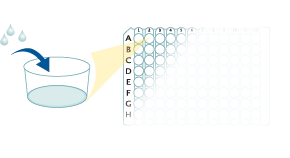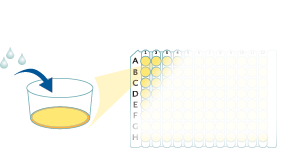Human TLR2 Quantikine ELISA Kit
Human TLR2 Quantikine ELISA Kit Summary
Product Summary
Recovery
The recovery of human TLR2 spiked to levels throughout the range of the assay in various matrices was evaluated.
| Sample Type | Average % Recovery | Range % |
|---|---|---|
| Cell Culture Media (n=4) | 96 | 92-98 |
| EDTA Plasma (n=4) | 98 | 86-107 |
| Heparin Plasma (n=4) | 98 | 88-105 |
| Serum (n=4) | 99 | 84-111 |
| Urine (n=4) | 98 | 91-108 |
Linearity
Scientific Data
 View Larger
View Larger
Human TLR2 ELISA Cell Culture Supernate/Cell Lysate/ Saliva/Urine/Human Milk Standard Curve
Product Datasheets
Preparation and Storage
Background: TLR2
TLRs make up a family of pattern recognition receptors that play important roles in the innate immune response. Broad classes of pathogens (e.g. viruses, bacteria, and fungi) constitutively express a set of mutation-resistant molecules called pathogen-associated molecular patterns (PAMPs). These microbial molecular markers may be composed of proteins, carbohydrates, lipids, nucleic acids and/or combinations thereof. Individual TLRs recognize distinct pathogen-associated PAMPs, initiating signaling cascades that promote the immune response. Structurally, TLRs are type I transmembrane receptors that possess varying numbers of extracellular N-terminal leucine-rich repeat (LRR) motifs, followed by a cysteine-rich region, a TM domain, and an intracellular Toll/IL-1 R (TIR) motif. The TIR motif is common to the larger IL-1 R/TLR superfamily.
Assay Procedure
Refer to the product- Prepare all reagents, standard dilutions, and samples as directed in the product insert.
- Remove excess microplate strips from the plate frame, return them to the foil pouch containing the desiccant pack, and reseal.
- Add 100 µL of Assay Diluent to each well.
- Add 100 µL of Standard, control, or sample to each well. Cover with a plate sealer, and incubate at room temperature for 2 hours on a horizontal orbital microplate shaker.
- Aspirate each well and wash, repeating the process 3 times for a total of 4 washes.
- Add 200 µL of Conjugate to each well. Cover with a new plate sealer, and incubate at room temperature for 2 hours on the shaker.
- Aspirate and wash 4 times.
- Add 200 µL Substrate Solution to each well. Incubate at room temperature for 30 minutes on the benchtop. PROTECT FROM LIGHT.
- Add 50 µL of Stop Solution to each well. Read at 450 nm within 30 minutes. Set wavelength correction to 540 nm or 570 nm.





FAQs
-
What is the normal appearance of Assay Diluent RD1-75?
Assay Diluent RD1-75 contains high concentrations of additives and typically has a very cloudy, brown appearance. It is recommended to mix this diluent well before and during use.
Reviews for Human TLR2 Quantikine ELISA Kit
There are currently no reviews for this product. Be the first to review Human TLR2 Quantikine ELISA Kit and earn rewards!
Have you used Human TLR2 Quantikine ELISA Kit?
Submit a review and receive an Amazon gift card.
$25/€18/£15/$25CAN/¥75 Yuan/¥2500 Yen for a review with an image
$10/€7/£6/$10 CAD/¥70 Yuan/¥1110 Yen for a review without an image










